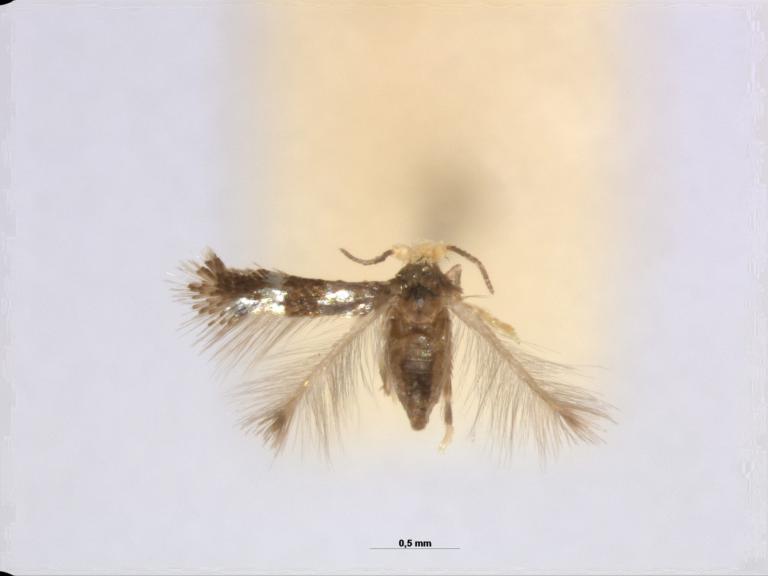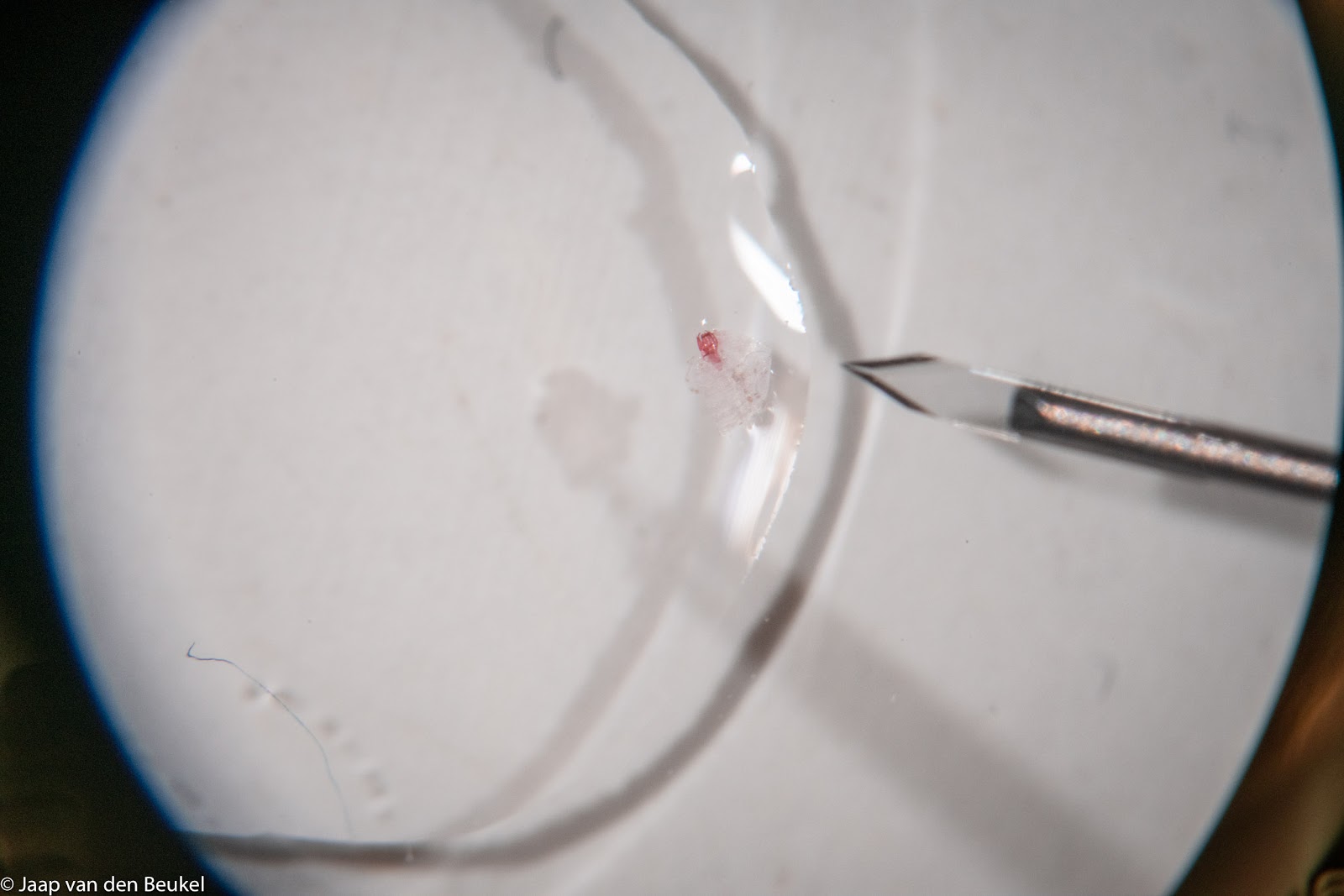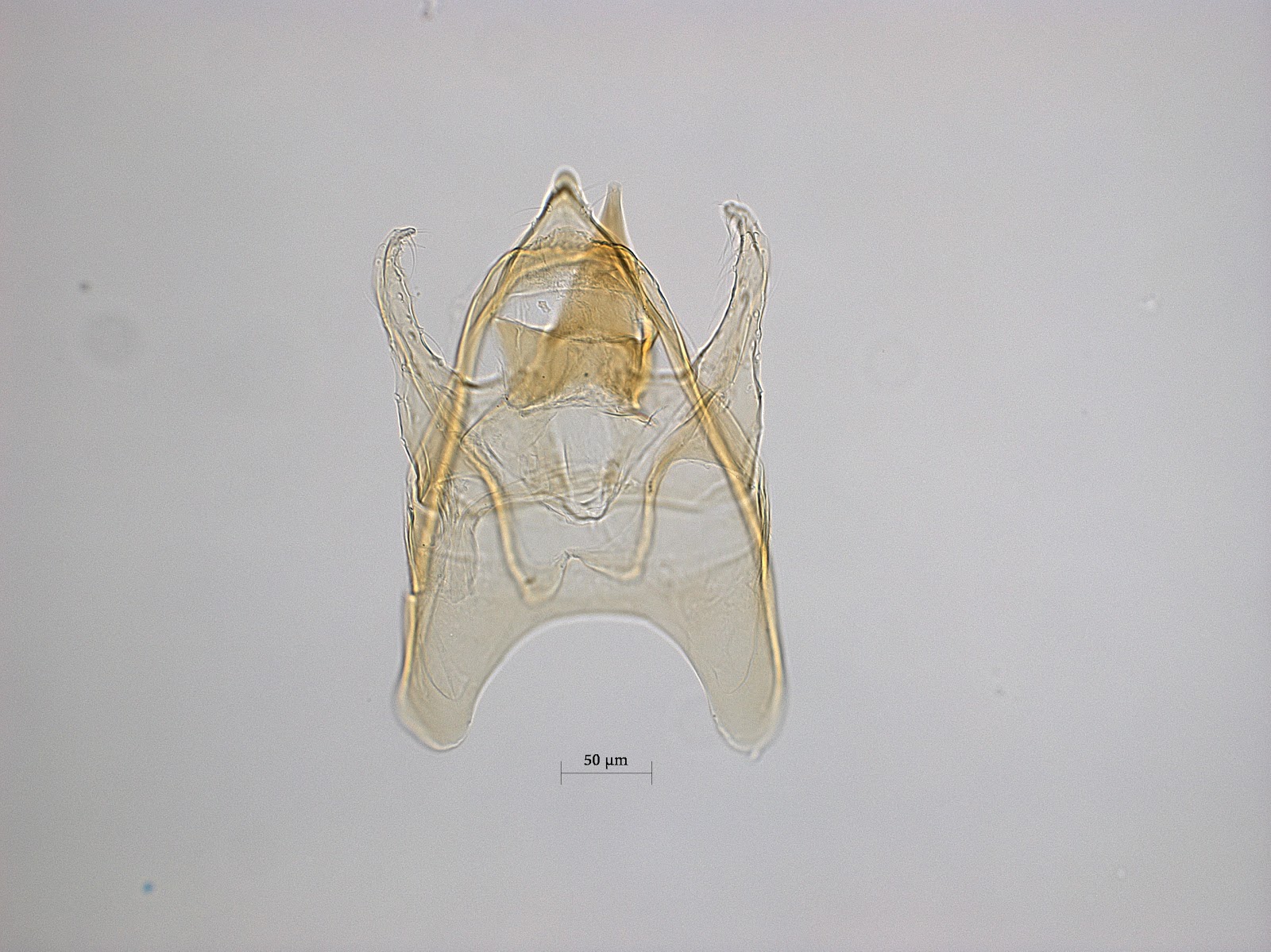
Kees van den Berg, senior research analyst at Naturalis Biodiversity Center in Leiden, uses ophthalmic instruments to genitalize micro-moths. "My work takes place in the laboratory, where I am involved in, among other things, the dissection of microlepidoptera, this is extremely precise work"
The smallest of these micros have a wingspan of only 2.1 mm. These moths are not even the smallest insects that Naturalis has in its collection. These are tiny parasitic wasps. These Mymaridae are egg parasites that lay their eggs in the egg of another small insect. The males of these wasps are sometimes only 120 microns in size. But also in working with the moths, the microscope and micro-instruments play the leading role. This is precision work: sometimes sitting still for hours at a time.
We work with small minuten needles to prepare the genital from the 200 micron abdomen. These pins are so flexible that such a genital sometimes just gets whipped away during preparation, then you have lost everything.
Smallest available dissection materials
Now one of my interests is searching for the smallest available dissection materials. There is an extremely fine diamond knife on the market, this is used in retinal surgery. This blade has a thickness of 0.1 millimeter and the length is two millimeters. I use it to make a very small incision under the microscope between the segments of the abdomen of the moth. It gives a very smooth cut that ensures that the abdominal tissue does not tear. With forceps I then remove the last two segments that contain the sexual characteristics. I stain these to make them visible, then I put it on an object glass in a drop of Euparal which I cover with a cover glass of 6x6 mm, sometimes even smaller.

Picture: "With a diamond knife I can make microdissections very precisely "
Sustainable for eternity
That genital preparation thus remains sustainable for eternity, even if the prepared insect itself were lost. It is really the signature of the moth, you can even recognize the butterfly if it has very few external characteristics. Of course, the label on which you put the data must last a very long time. That is why we use 100% cotton paper that is offset printed. These labels have been tested for their shelf life and will last for many hundreds of years. Laser printed labels will eventually fade without a trace of text.
Picture: Male genital of an undescribed Nepticulid moth that mines in the 2 mm. large leaves of the shrub Cassinia spec .: Asteraceae
What is the use of mapping?
A frequently asked question is of course: what is the use of mapping all species of butterflies in the world? We know that every butterfly species has its own biology. Insects are often monophagic, which means that a species will get extinct if one tree or plant species disappears. The habitat destruction that we see worldwide, for example, has had grotesque consequences for the butterfly populations and if this continues, it will have major consequences for all of us. Just like many other insects, butterflies are pollinators of our food plants. In this way not only biodiversity disappears, but also our food supply is endangered.
Feeding track
In addition to the micro butterflies themselves, we also investigate the leaf material of the trees and shrubs in which the larvae of these leaf mining moths live. Because each moth species has its own typical feeding track (larval mine). This way we can link the two together. Does a plague occur in e.g. fruit trees, then we can map out whether a moth is responsible or another insect species.